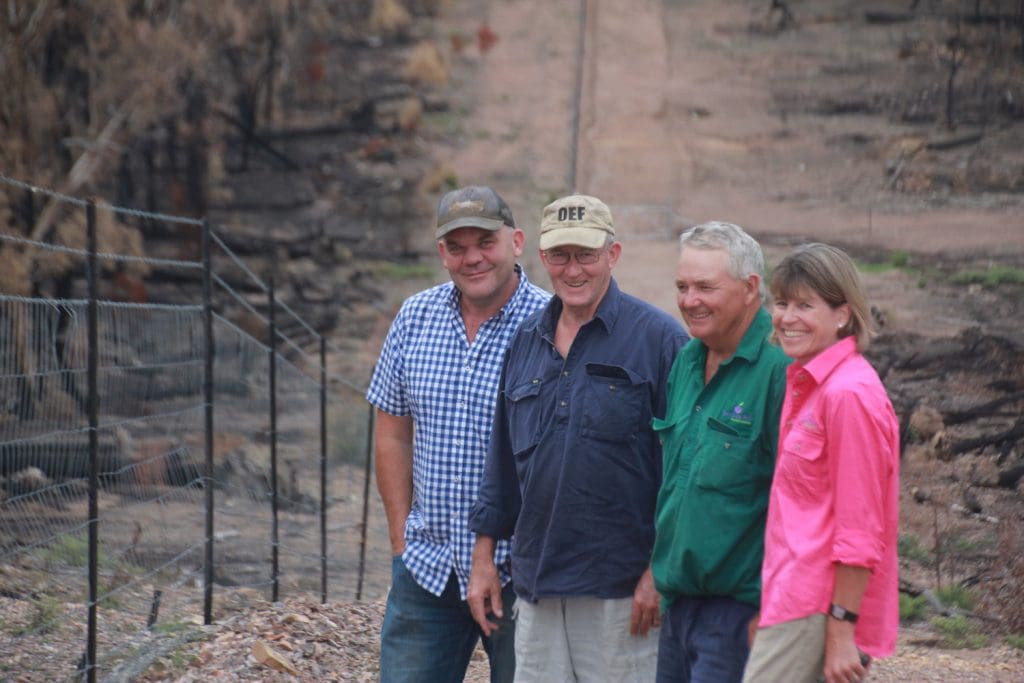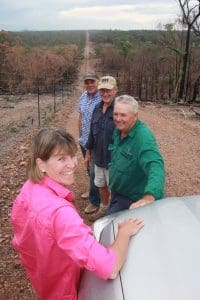
John Griffith, Mark Russell and Sandy and Sally Smith say a predator proof boundary fence built around their four Traprock properties has been a game-changer for their sheep operations.
Steel posts and wire netting are proving to be effective weapons in the fight against wild dogs in Queensland’s traprock region.
Predator-proof fencing, partly constructed with State and Federal Government funding, is demonstrating a clear return on investment for three sheep producers who have recently formed a fencing ‘cluster’ between Warwick and Inglewood.
Neighbouring Gore-district sheep producers, John and Shannon Griffith from Ennisclare and Columba, Sandy and Sally Smith from Allendale and Mark Russell from Weyunga, have built a 1.5 to 1.8 metre high netting fence around the perimeter of their properties.
“It is a game-changer,” said Sandy Smith, the immediate past president of AgForce Sheep and Wool.
“It was either do this or go out of sheep.”
Historically, sheep losses to dogs in the district amounted to less than 0.5 percent.
 But in recent years losses have been savage, rising to 10pc and 20pc, in some cases more.
But in recent years losses have been savage, rising to 10pc and 20pc, in some cases more.
The fence is 1500-1800mm high, with 150mm x 150mm netting, and steel posts six metres apart. A 400mm external ground apron prevents dogs from digging and entering under the fence.
Construction costs have been in the vicinity of $4900/km (inc GST) for materials, plus labour.
The development was partly assisted through State and Federal funding administered through the Goondiwindi Regional Council.
The benefits are already obvious.
Since its construction there has been no loss to a dog within the 15,000 hectare area now behind the fence.
Greater control over pasture management is also a major advantage.
A White Dorper flock on Ennisclare and Columba has produced lambing rates of 110pc since the fence was in place.
After losing close to 1000 young wethers to dogs in a single year, Mr Smith said the only realistic option to remain in sheep was to fully fence with boundary exclusion netting.
“It’s nice to be able to muster a paddock again and find the same number of sheep I put in there,” Mr Smith said.

Good thinking Sandy, it’s good to see someone do something for themselves instead of blaming the government. You will be able to sleep soundly now.